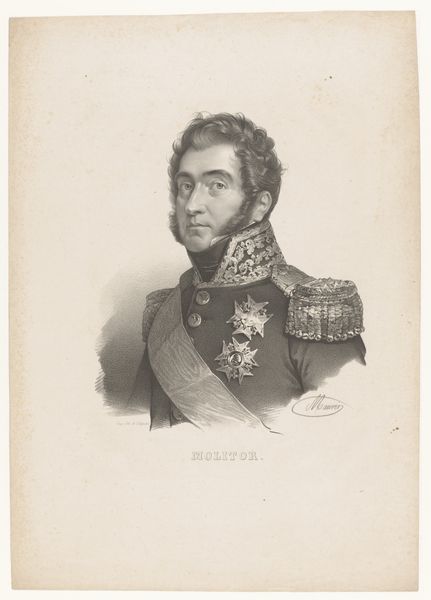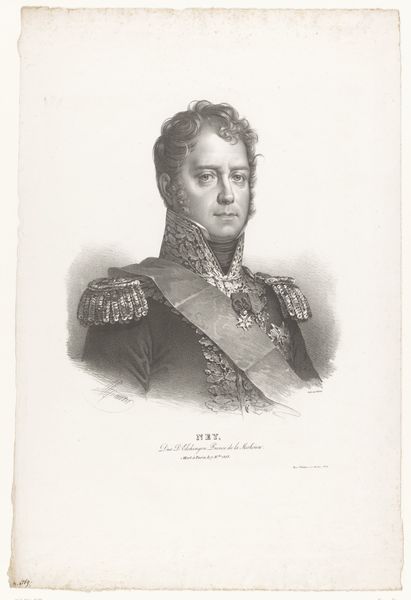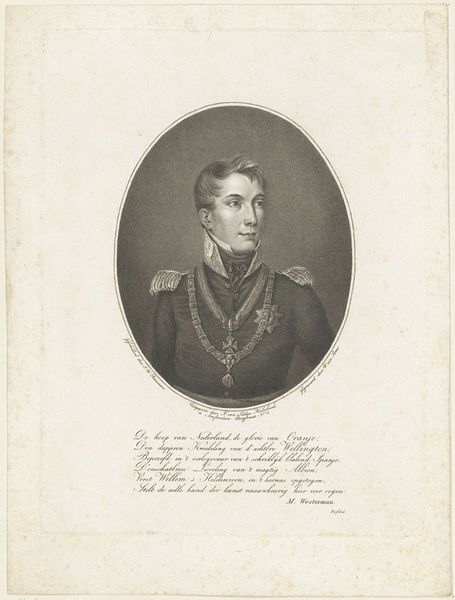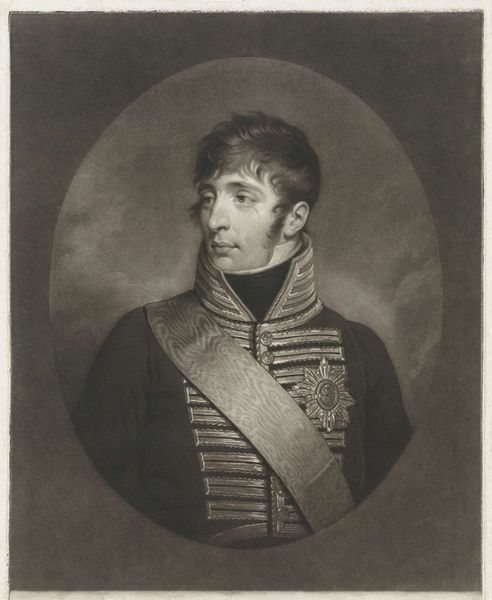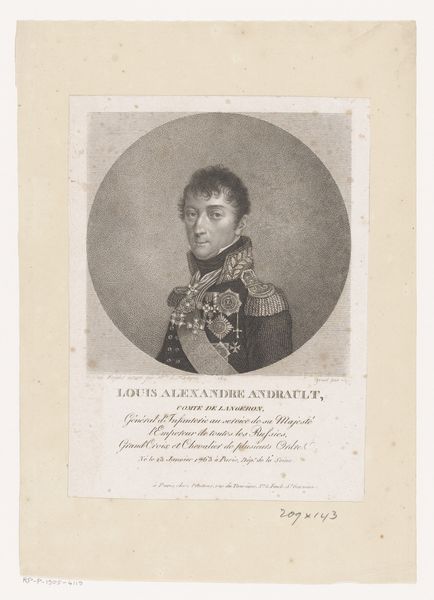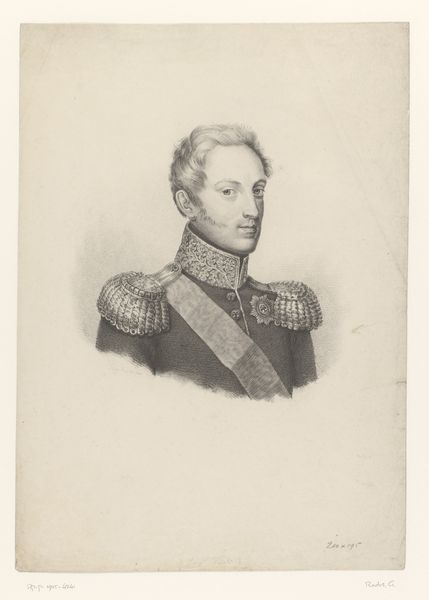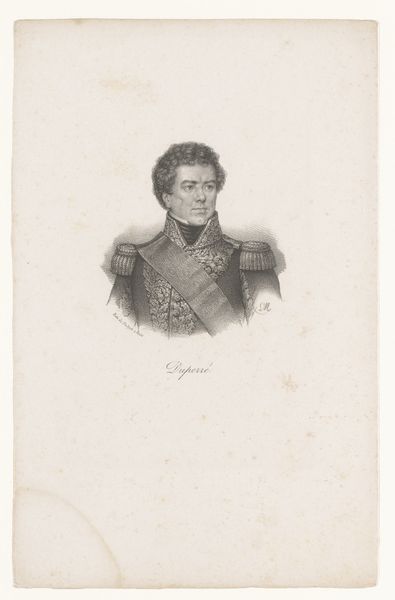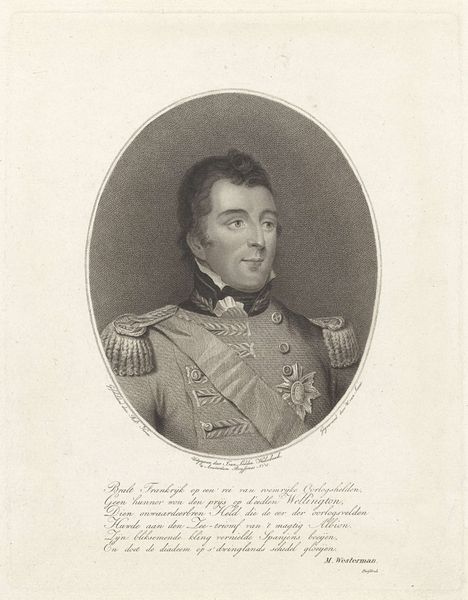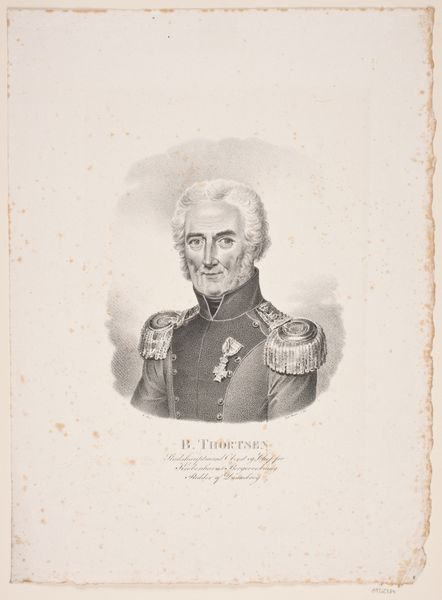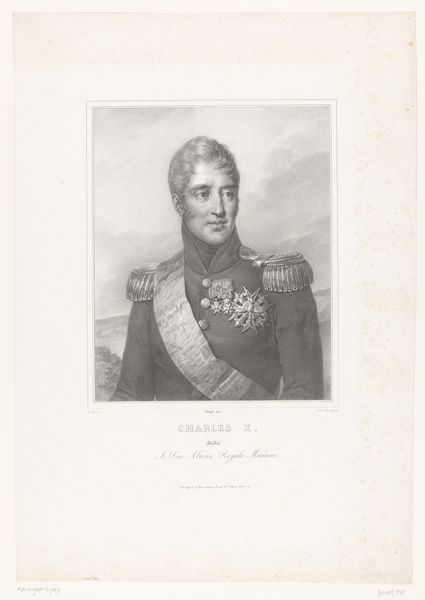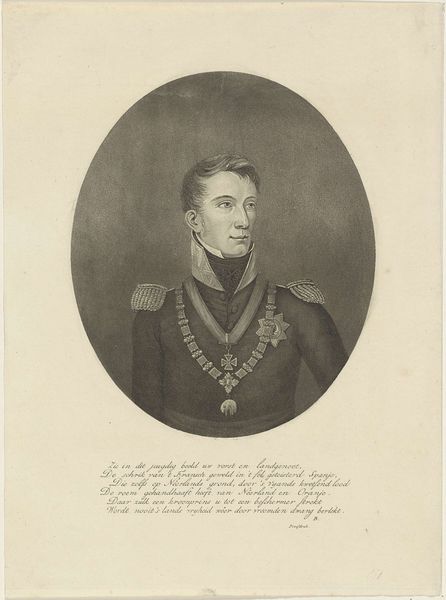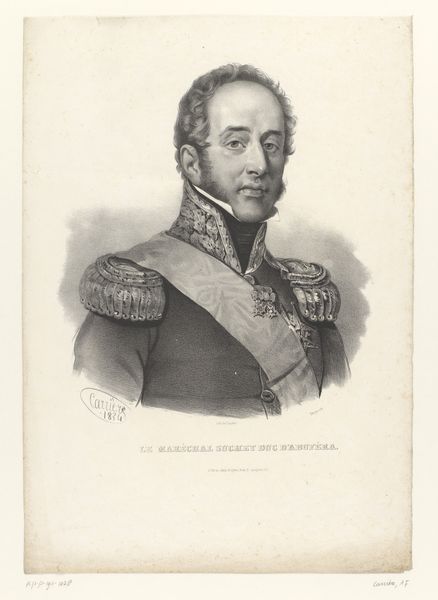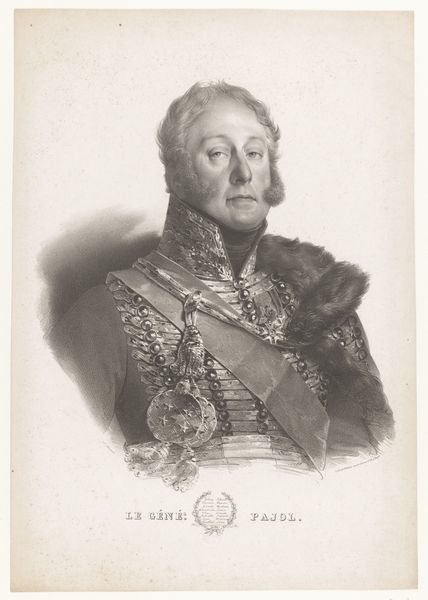
drawing, graphite
#
portrait
#
drawing
#
neoclacissism
#
pencil drawing
#
graphite
#
portrait drawing
#
realism
Dimensions: height 182 mm, width 127 mm
Copyright: Rijks Museum: Open Domain
Bernard Romain Julien created this print of Guy-Victor Duperré in the 19th century, capturing the Admiral in exquisite detail. During this period, France was undergoing significant social and political change, and images of powerful men like Duperré were tools for constructing national identity and projecting authority. Observe how Duperré is presented: his stern gaze, the ornate military attire, and the confident posture. These are all designed to convey power, leadership, and a sense of unwavering resolve. But what does it mean to portray a man this way? How does it contribute to the narratives of masculinity and heroism prevalent at the time? Consider the legacy of colonialism and military expansion during this era. Duperré was a key figure in these endeavors. The portrait isn't just about an individual; it reflects the values and ambitions of an entire society. It invites us to think critically about the stories we tell about our leaders and the impact these stories have on shaping our understanding of history and ourselves.
Comments
No comments
Be the first to comment and join the conversation on the ultimate creative platform.
